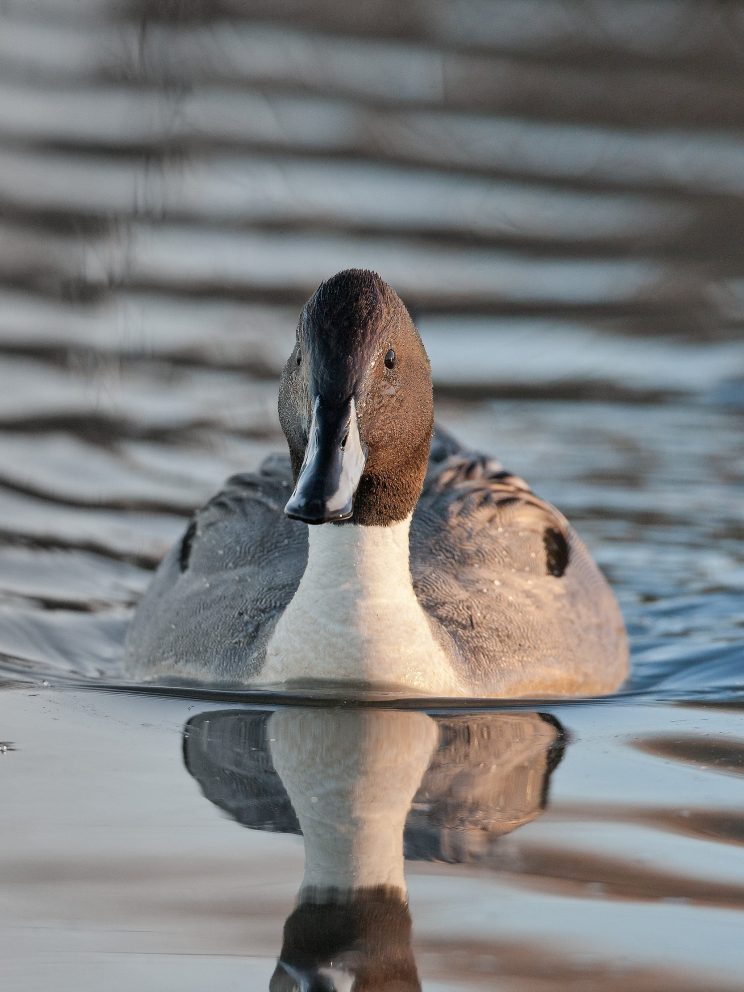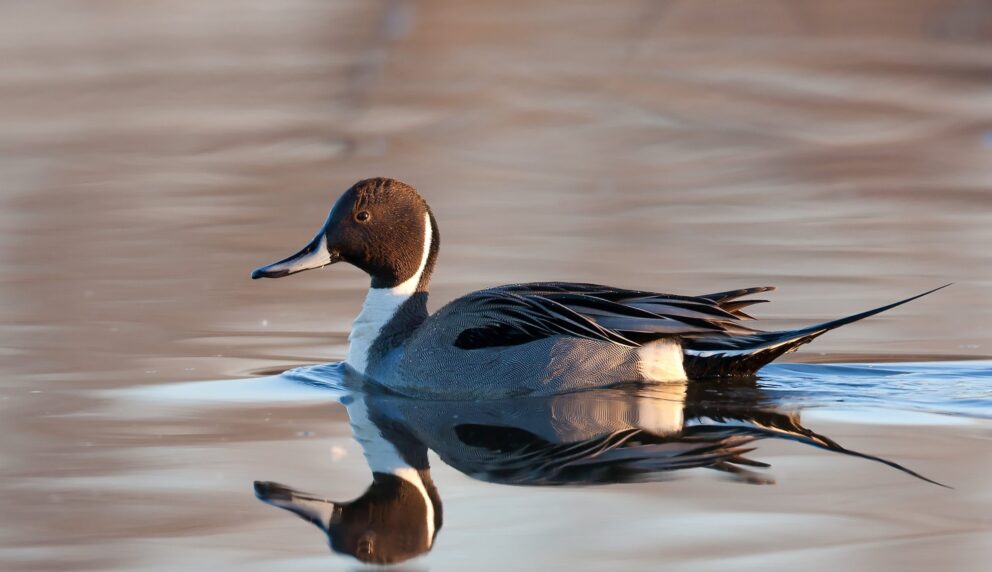- SCIENTIFIC NAME
- Anas acuta
- CLASSIFICATION
- Bird
- LIFE SPAN
- 5-20 Years
- SIZE
- 20-29” | 1-3lbs
- STATE CONSERVATION STATUS
-
- Priority Species
- FEDERAL CONSERVATION STATUS
- Least Concern
- GAME STATUS
- Game
- GAME TYPE
- Waterfowl
- Washoe
- Humboldt
- Pershing
- Churchill
- Mineral
- Lyon
- Douglas
- Carson City
- Storey
- Elko
- Lander
- Eureka
- White Pine
- Esmeralda
- Nye
- Lincoln
- Clark
Habitat & Range
Preferred habitat for Northern Pintails can change based on time of day. They generally prefer wetlands during the day, but move onto flooded agricultural or rice fields in the evenings. Their breeding and nonbreeding grounds also differ, preferring wetlands with short vegetation in the breeding season, and open bodies of water like lakes or estuaries in the nonbreeding season.
- Grasslands
- Lakes and reservoirs
- Marsh
Threats
- Habitat Degradation
- Habitat Loss
Natural History
Northern Pintails are dabbling ducks of North America, Europe, Africa, and Asia. In Nevada, they can be found year-round in northern habitats ranging from flooded agricultural fields and wetlands to lakes and ponds. In the southern and middle parts of Nevada, Northern Pintails occupy their wintering habitats, mostly consisting of shallow waters among low vegetation or flooded fields. Northern Pintails are omnivores, eating items like seeds from aquatic plants, worms, aquatic insects, snails, and grains. They can often be seen walking along shallow muddy shores picking at insects and seeds every couple steps. Breeding for Northern Pintails is not completely monogamous. They may pair up on the wintering grounds but find other mates on the breeding grounds. Typically breeding pairs only last a single season. Migration happens in early spring, and pintails arrive just after the ground has thawed. They nest on the ground where they will lay three to 12 eggs per brood. Eggs are incubated for 22 to 24 days before they hatch. Ducklings are covered in down feathers and ready to leave the nest within hours after they hatch. Pintails remain fairly social throughout the year, foraging in flocks in a fairly peaceful manner. Males flock together after females start incubating and will migrate back to wintering grounds together.
Fun Facts














